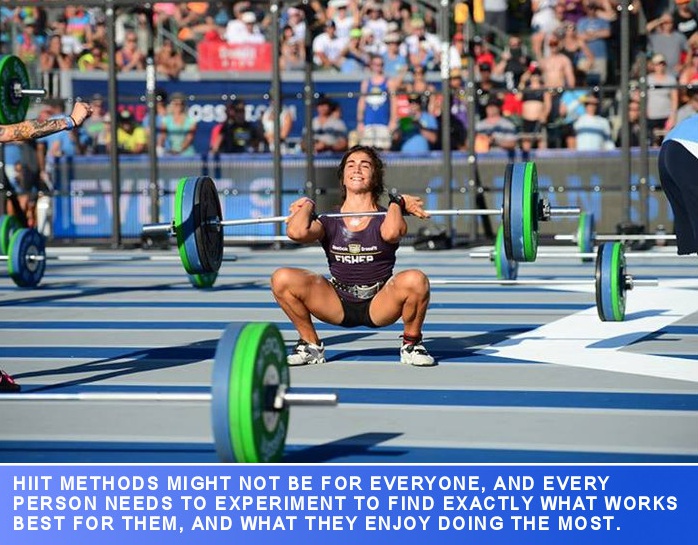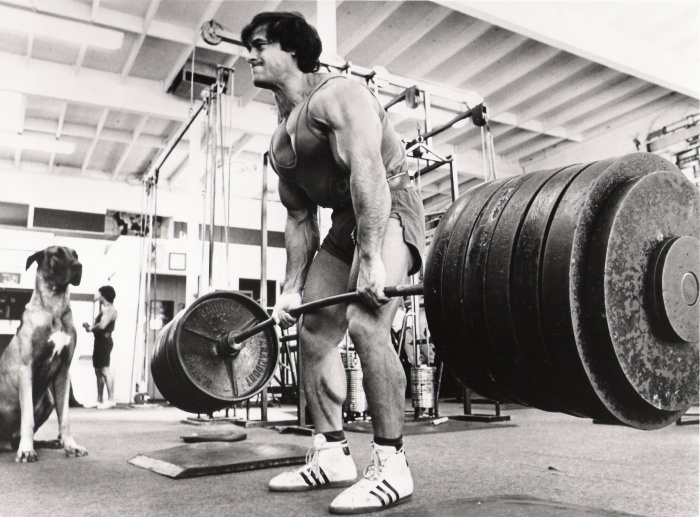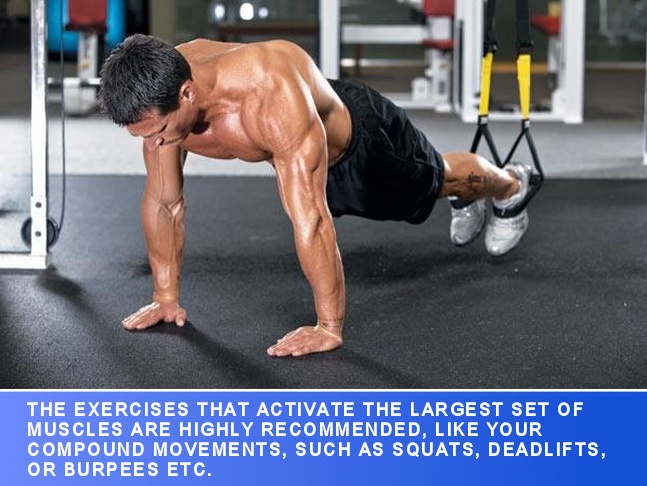If you are looking for watch words that could precisely describe the popularity of High Intensity Interval Training, they would be “less is more”.
HIIT has been an enormously popular type of workout in recent years since it is the workout that combines two types of training. It triggers the afterburn effect (calorie burning up to 48 hours after), and HIIT increases resting metabolic rate (RMR) for the next 24 hours due to excess post exercise oxygen consumption, and it can also improve your VO2 Max. This is called High Intensity Training, and the other aspect of it that builds muscle mass and enhances metabolism is termed, Interval Training.
The two main reasons behind the growing interest in HIIT are:
- The methods save time and they are the most effective, especially when it comes to weight loss.
- We prefer training regimes that bring faster results and are not time-consuming; however, people take different approaches to HIIT’s methods, arguing which one is the best.
So, which one is better: a session of four 30-second bouts of all-out on stationary exercise bicycle, or a workout of 45 minutes including body weight exercises? Is it better to perform such methods two to three times a week, or to work out almost every day? Something that has to be remembered is that HIIT methods might not be for everyone, and every person needs to experiment to find exactly what works best for them, and what they enjoy doing the most.
Depending on your goals and preferences, you can decide on which method is best for you.
What do you need to know?
Tabata Method:
If you are in good shape and have little time.
If you stick to this plan, in the longest four minutes of training, you will push yourself as hard as you can, and increase strength, improve flexibility, and lose weight.
Dr. Izumi Tabata of the National Institute of Fitness and Sports in Tokyo discovered this training method, and the structure of the program is simple:
Workout hard for 20 seconds, rest 10 seconds, and repeat all exercises in eight rounds.
An example of common exercises include push-ups, squats, rows and sit-ups, although you can do pretty much any exercise you wish, including those on exercise bikes. However, the truth is that the exercises that activate the largest set of muscles are highly recommended, like your compound movements, such as squats, deadlifts, or OH Squats, Burpees etc.
When Dr. Tabata conducted research on two groups of athletes, the one group trained at a moderate intensity level while the other group trained at a high intensity level. The group that worked out at a high intensity level for four days a week for six weeks, had an increase in their anaerobic system by 28 percent. The high intensity group’s workout lasted four minutes and 20 seconds as opposed to the moderate intensity group’s workout which lasted for an hour.
How to do it?
- Warm up for 3 minutes
- Then 20 seconds of sprinting and 10 seconds of walking.
- Or, start with push-ups, rest 10 seconds, and back to push-ups for 20 seconds, rest for a minute and move on to squats or something else.
Remember you can do the Tabata method for cycling or other cardio exercises as well, 2 to 4 times a week.
Tabata Cardio Example:
- Warm up: Slow run for 3 minutes
- Workout: Sprint for 20 seconds
- Workout: Walk or Stand still for 10 seconds
- Repeat workout 8 times
HIIT Cardio Example:
- Warm up: Slow run for 3 minutes
- Workout: Sprint on Rower for 30/45/60 seconds
- Stop for 30/45/60 seconds
- Repeat workout for 12 minutes
This can also be done outside for example, sprint up a hill, then walk down, or sprint from one lamp post to the next and walk to the next lamp post. You can be creative and set up to suit your fitness level and increase as you go on.
Tabata workout programme example:
Do as many push ups as you can for 20 seconds then rest for 10 seconds and repeat 8 times, then do the same with pull ups, then squats, then crunches in order to cover the whole body in your workout.
Example HIIT workout:
- Bench Press 8 Reps at 70% 1RM
- Box Jumps 8 Reps
- Rest 30 seconds and repeat.
(Or try it with Squats for 8 reps and Pull Ups for 8 reps.) There are many examples of how to do this, but you can do a full body workout every time or focus on one or two muscle groups at a time, depending on your schedule.
Little Method:
If you wish to have a flexible routine with maximum results.
In 2009, Dr. Johnathan Little and Martine Gibala developed this method, which consists of:
60 seconds of high intensity workouts followed by 75 seconds of low intensity, for a total of 12 cycles (27 minutes), three times a week.
This is a very demanding method; it requires discipline, and the fact that this method includes hard muscle work, which produces 95 percent of one’s VO2 (the highest amount of oxygen a body consumes during exercising), fat burning is maximised. When you work the body close to its VO2, your body continues to consume oxygen, that is, the afterburn effect is very high, and thus, this, ‘Little Method’ is for those whose goal is to lose weight.
How to do it?
- Warm up: Slow run for 3 minutes
- Workout: Cycle or sprint for 60 seconds
- Workout: Followed by 75 seconds of slow cycling or walking
- Repeat the workout for 27 minutes.
Turbulence (Circuit) Training:
If you have a bit more time and prefer body weight exercises.
Craig Ballantyne, an exercise physiology researcher, developed Turbulence training, a 45-minute workout of cardio and body weight set of exercises. This method is created to get the best results in weight loss (fat burning) and muscle composition, being more efficient than traditional methods, for instance, an hour of body weight exercises. The combination of exercises does not only increase strength and influence on body composition and muscle shaping, but also raises the metabolic rate more than other cardio workouts.
How to do it?
- Warm up: Slow run for 5 minutes
- Workout: Start with 8 reps of weight training sets,
- Workout: Followed by intense cardio exercises for 1-2 minutes (one minute of mountain climbers or burpees for example),
- Repeating a full-body strength routine for 45 minutes.
If you have time, and wish to lose weight while increasing strength, Turbulence training is the best method.
Depending on your goals, you can experiment with different methods and incorporate different exercise styles.
However, if you are a beginner, HIIT methods might be too much to handle. So if you’re a beginner make your working phase shorter or lighter and your rest period a few seconds longer, work it up to where you work at full capacity and your rest becomes shorter and shorter.
If not, these methods are quite a challenge, so, challenge yourself! When these workouts are done correctly, you will reach your goals in no time.


















